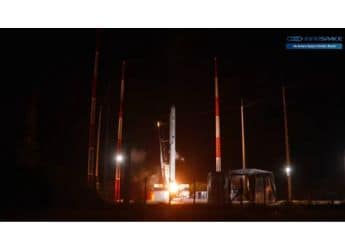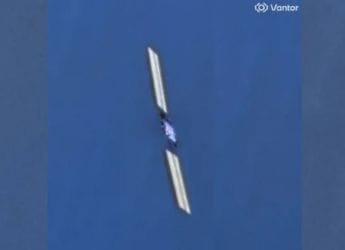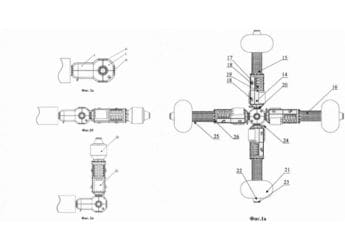- Home
- Science
- Science News
- Venus May Be Geologically Active: New Study Reveals Tectonic Processes Shaping Its Surface
Venus May Be Geologically Active: New Study Reveals Tectonic Processes Shaping Its Surface
A groundbreaking study suggests Venus is not geologically dormant. Hot mantle plumes may be actively deforming their surface, reshaping mysterious coronae formations.

Photo Credit: JPL-Caltech/NASA
Venus Could Be Geologically Active! New Study Finds Tectonic Clues Beneath Mysterious Surface Features
A recent study, published in the Journal Science Advances on May 14, 2025, suggests that Venus, previously considered inactive, may be geologically active. This may be the result of tectonic plate activity. Further research shows that the mysterious circular landforms on Venus. These are called coronae and get their shape due to the rising plumes of hot rocks under the surface. This activity, similar to Earth's tectonic plates, changes Venus' behaviour as a dead planet. Further, it triggers the questions about its dynamic past and habitability in future.
Unravelling the Mystery of Coronae
The research published in the Journal Science Advances was led by Geal Cascioli, an assistant research scientist at the University of Maryland and NASA's Goddard Space Flight Center. The research team analysed NASA's Magellan mission Data after it orbited Venus in the 1990s to know the coronae, which are circular and vast in geological structure.
In 1983, when Venus coronae was discovered, it puzzled the scientists because of its unique and circular shape. The recent research shows that the structures are formed by the hot material plumes originating from the mantle of Venus. Such plumes despised the crust, making circular ridges and valleys on its surface.
Gravity Data Unlocks Hidden Activity
With NASA's Magellan data, researchers found plumes under 52 coronae. The observations, like a change in the gravity because of the underground difference in the density, confirm the predictions made by the simulations and give strong evidence that Venus is not inactive geologically.
Subduction Without Plates
Venus has no tectonic plates like Earth; however, the new findings indicate the possibility of subduction at the edges of coronae. Plumes from beneath push outward, causing the surrounding crust to bend and dive under the coronae. These zones could be at the place where Venus experiences strong seismic activity.
Looking Toward Future Missions
The research indicates that Venus is tectonically active at present. This signals that if Venus is active geologically now, it might have a habitable milieu, signalling the new possibilities in terms of future habitat potential and planetary evolution.
Get your daily dose of tech news, reviews, and insights, in under 80 characters on Gadgets 360 Turbo. Connect with fellow tech lovers on our Forum. Follow us on X, Facebook, WhatsApp, Threads and Google News for instant updates. Catch all the action on our YouTube channel.
Related Stories
- Samsung Galaxy Unpacked 2025
- ChatGPT
- Redmi Note 14 Pro+
- iPhone 16
- Apple Vision Pro
- Oneplus 12
- OnePlus Nord CE 3 Lite 5G
- iPhone 13
- Xiaomi 14 Pro
- Oppo Find N3
- Tecno Spark Go (2023)
- Realme V30
- Best Phones Under 25000
- Samsung Galaxy S24 Series
- Cryptocurrency
- iQoo 12
- Samsung Galaxy S24 Ultra
- Giottus
- Samsung Galaxy Z Flip 5
- Apple 'Scary Fast'
- Housefull 5
- GoPro Hero 12 Black Review
- Invincible Season 2
- JioGlass
- HD Ready TV
- Laptop Under 50000
- Smartwatch Under 10000
- Latest Mobile Phones
- Compare Phones
- Huawei Nova 15
- Huawei Nova 15 Pro
- Huawei Nova 15 Ultra
- OnePlus 15R
- Realme Narzo 90x 5G
- Realme Narzo 90 5G
- Vivo S50 Pro Mini
- Vivo S50
- Asus ProArt P16
- MacBook Pro 14-inch (M5, 2025)
- Huawei MatePad 11.5 (2026)
- OnePlus Pad Go 2 (5G)
- Huawei Watch 10th Anniversary Edition
- OnePlus Watch Lite
- Acerpure Nitro Z Series 100-inch QLED TV
- Samsung 43 Inch LED Ultra HD (4K) Smart TV (UA43UE81AFULXL)
- Asus ROG Ally
- Nintendo Switch Lite
- Haier 1.6 Ton 5 Star Inverter Split AC (HSU19G-MZAID5BN-INV)
- Haier 1.6 Ton 5 Star Inverter Split AC (HSU19G-MZAIM5BN-INV)

















